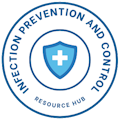
Other Topics
Water Management: Sinks and Drains
 Recent scientific evidence has shown that sinks and other drains, such as those in toilets or hoppers, can become contaminated with multidrug-resistant organisms (MDROs) in healthcare facilities. This is because different types of bacteria may contaminate the same drain, so antibiotic resistant genes can be transferred between bacterial species. These pathogens can stick to the pipes and form biofilms, which allow them to stay in drains for long periods of time. Biofilms are often difficult or impossible to fully remove.
Recent scientific evidence has shown that sinks and other drains, such as those in toilets or hoppers, can become contaminated with multidrug-resistant organisms (MDROs) in healthcare facilities. This is because different types of bacteria may contaminate the same drain, so antibiotic resistant genes can be transferred between bacterial species. These pathogens can stick to the pipes and form biofilms, which allow them to stay in drains for long periods of time. Biofilms are often difficult or impossible to fully remove.
The following measures can reduce the risk of MDRO transmission events from occurring in healthcare facilities:
- Clean and disinfect all surfaces near the drain at least once per day, this includes the sink basin, faucet, faucet handles, and surrounding countertop.
- Avoid putting patient care items or personal items on counters next to sinks. Make sure that there is a 3-foot splash zone around the sink.
- While handwashing sinks must be accessible to personnel responsible for preparing patient medications, avoid locating sinks right next to medication preparation areas unless there are proper barriers are in place to prevent splashing.
- Offset the faucet from the drain or angle the water away from the drain to decrease splash risk. When installing new sinks, consider selecting designs that prevent splashing.
- Use sinks in patient care areas with adequate depth and the maximum water flow as regulated to prevent splashing.
- Install and utilize hopper and toilet covers. These covers should be closed before flushing. If such covers are not available or are prohibited due to local plumbing or building code, close any door that separates the hopper or toilet from other patient care areas before flushing to contain any resulting environmental contamination.
- Do not discard patient waste down sinks and avoid discarding liquid nutritional supplements or other beverages down sinks or toilets in patient or resident rooms.
For more information
Check out the CDC's Reduce Risk from Water webpage.
Related Webinars
Please see our recorded From Plumbing to Patients: Outbreaks and Water Management Programs in Healthcare Settings webinar.